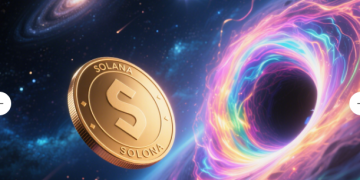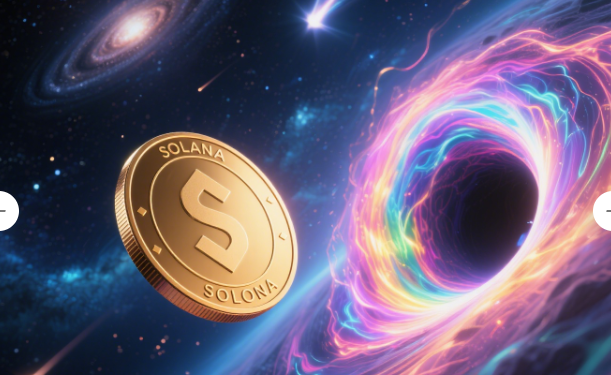In the ever-evolving world of blockchain, Solana Token (SOL) has emerged as a standout performer, captivating developers, investors, and institutions alike with its unmatched speed and scalability. But beyond the headlines and surging price charts lies a deeper story—one shaped by groundbreaking technology, ecosystem expansion, and critical user concerns that are still seeking answers. This article peels back the layers to help readers truly understand SOL’s value and the challenges that lie ahead.
The Solana Advantage: Why Speed Is More Than Just a Number
One of Solana’s boldest claims is its blazing transaction speed—up to 65,000 transactions per second (TPS), a benchmark that dwarfs Ethereum’s ~15 TPS and even Visa’s 24,000 TPS ceiling. This speed is enabled by a novel consensus mechanism: Proof of History (PoH), combined with Proof of Stake (PoS). According to a technical whitepaper by Solana Labs, this hybrid approach allows for parallel processing and rapid timestamping, virtually eliminating network congestion (Yakovenko, 2020).
<em>But what does this mean for the user?</em> Lower fees. Lightning-fast execution. Seamless dApp experiences. These are game-changers for DeFi and NFT platforms built on Solana.
Real-World Use Cases Gaining Momentum
From decentralized finance (DeFi) protocols like Marinade Finance and Jupiter Aggregator to NFT platforms such as Magic Eden, the Solana ecosystem is expanding fast. According to Messari’s Q1 2024 report, Solana’s daily active addresses surged by over 80% year-over-year, and its DeFi total value locked (TVL) has consistently hovered near $4 billion, a significant recovery from the 2022 crash.
Institutional interest is also on the rise. Payments giant Visa announced its partnership with Solana in 2023 to pilot USDC stablecoin settlements, marking a pivotal moment for blockchain in mainstream finance.
The Flip Side: Reliability and Centralization Concerns
Despite its advantages, Solana hasn’t been immune to scrutiny. One persistent issue is network outages. Since 2021, there have been at least 10 significant network halts, most recently in February 2024. These disruptions not only erode user trust but also raise concerns about the chain’s underlying resilience.
Another challenge lies in decentralization. Solana requires high-performance hardware for its validators, which leads to a relatively small and technically sophisticated validator set. Critics argue that this could potentially concentrate control, a deviation from the decentralization ethos of Web3.
Yet, developers are actively addressing these issues. The launch of Firedancer, a new validator client developed by Jump Crypto, is expected to significantly improve stability and decentralization upon its full release.

What Users Are Really Searching For: Pain Points and Solutions
When users search for “Solana vs Ethereum,” “Solana gas fees,” or “Is Solana reliable?” they’re often trying to reconcile performance with trust. Below are key concerns and how they’re being tackled:
- High-speed trading needs predictability: Solana’s sub-second finality appeals to institutional traders, but reliability must follow suit.
- Developer onboarding remains complex: Although Rust offers performance benefits, it has a steeper learning curve compared to Solidity. Solana Foundation now offers extensive documentation and dev grants to bridge this gap.
- Skepticism over network stability: Firedancer and local fee markets aim to reduce congestion and make validator operations more efficient.
These improvements demonstrate that Solana isn’t static—it evolves in response to user needs.
Tokenomics: Supply, Staking, and Market Behavior
As of June 2025, SOL ranks in the top 10 by market capitalization, with a circulating supply of approximately 447 million tokens and a market cap exceeding $70 billion, according to CoinGecko. Around 70% of SOL is staked, highlighting strong community involvement and a robust PoS mechanism.
Staking yields currently range between 6% and 8% annually, depending on validator performance. For users seeking passive income without high transaction fees or prolonged lock-up periods, Solana offers a competitive alternative.
Final Thoughts: Is Solana the Ethereum Killer?
The narrative of “Ethereum killer” may be oversimplified. In reality, Solana and Ethereum serve different needs. Ethereum boasts unparalleled security and ecosystem depth, while Solana excels in performance and cost-efficiency.
Yet with real-world integrations, evolving infrastructure, and growing user adoption, Solana Token is carving out its own lane—fast, functional, and increasingly trusted.
As the blockchain space matures, expect to see multi-chain ecosystems where Solana plays a key role—not by replacing Ethereum, but by complementing it.
For the latest on Solana and other crypto insights, stay tuned to Bitora.
About the Author
Alex Renn, a financial analyst specializing in blockchain-based assets, has over 7 years of experience in cryptocurrency markets. With a background in quantitative finance and decentralized systems, Alex provides in-depth analysis on emerging crypto trends, DeFi protocols, and token economics. His work focuses on translating complex blockchain dynamics into actionable strategies for both retail and institutional investors.



























